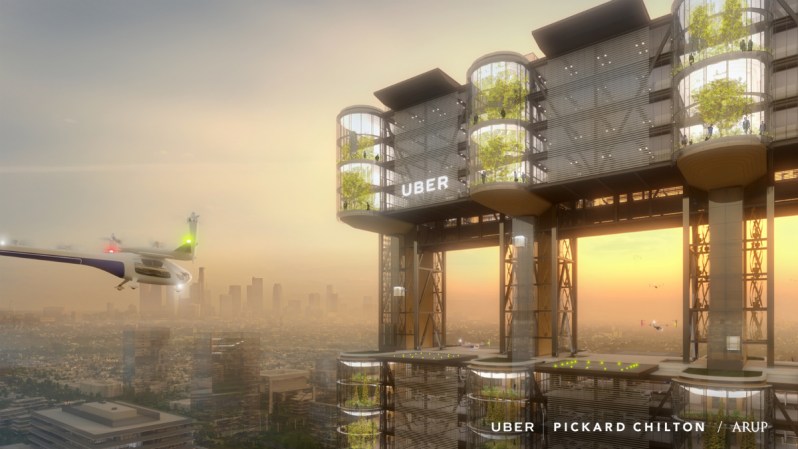
With Earth’s population passing seven billion humans, overcrowding is fast becoming a significant problem. While flying cars still seem to be a pipe-dream, some clever entrepreneurs will need to figure out more efficient means to shuttle city dwellers from A to B. Not surprisingly, Uber is taking on that challenge.
Say what you want about the company’s ethics, Uber has dominated the ridesharing business. Now, they’re looking to do the same for “flightsharing.” The new uberAIR concept is exactly what it sounds like. It will allow well-to-do urbanites to summon flying cars for short-hop flights across the city. The flying pods will use VTOL (vertical takeoff and landing) technology to shuttle passengers from point-to-point, eliminating the inconvenience of “traditional” road-based traffic. Since the pods will only be designed for trips of 50-100 miles, uberAIR is not aiming to replace commercial air travel. It’s instead meant to be a premium alternative to driving and less of a headache than hopping a flight.
In the demo video, uberAIR works similar to today’s process of hailing an Uber ride. A smartly dressed woman quickly confirms an uberAIR flight via her mobile phone. She looks skyward at a handful of VTOL aircraft hovering above the office building in front of her before heading inside. After a quick elevator ride to the roof, she breezes through a checkpoint by scanning a QR code on her phone, then walks to the launchpad outside where her flightshare is already waiting. In theory, the process isn’t any different than a standard ride with Uber, except that you would need to find the nearest helipad rather than, say, the nearest street corner.
The company says pilotless cars are the ultimate goal. At launch, however, the uberAIR
Uber has announced uberAIR demo flights will launch in 2020 with commercial operations to follow in Dallas and Los Angeles by 2023. They’re also seeking a third, international city to join the trial program. While a five-year timeline seems awfully optimistic, Uber is one of the most ambitious and well-funded tech companies in the world right now. So, we could see the skies crowded with flying car traffic much sooner than expected.



